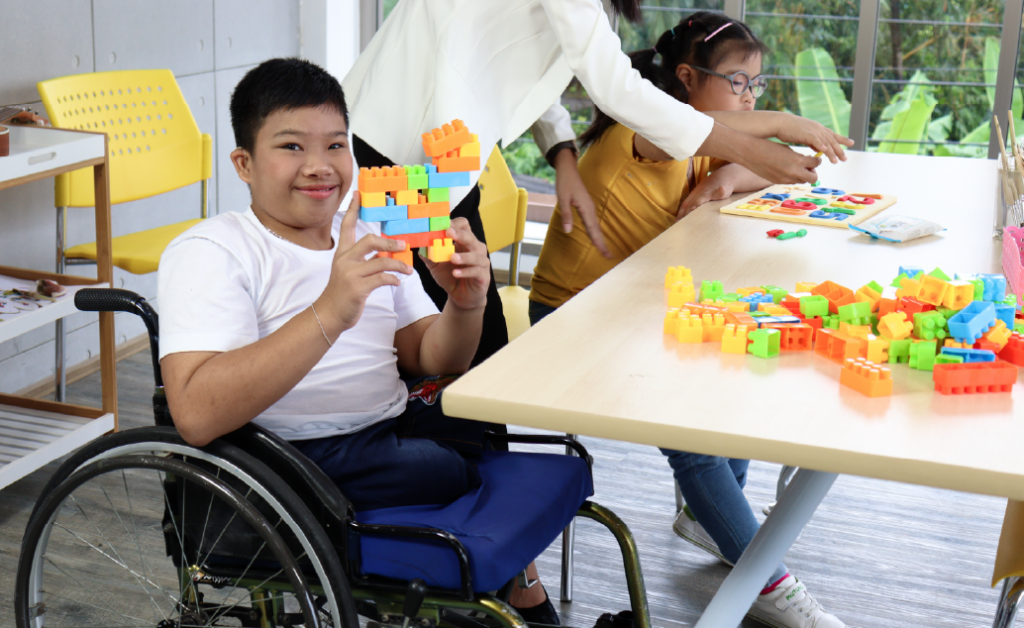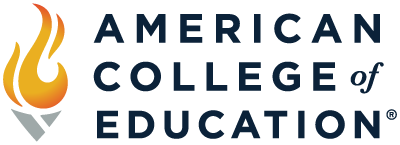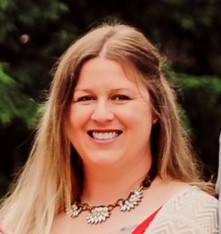
Students with low incidence disabilities have a long history of being excluded from their peers in educational settings. Low incidence disabilities are defined as visual or hearing impairments, significant cognitive impairments, or impairments that require highly specialized attention from elementary through high school and beyond. Unfortunately, educators and parents of these students often feel that the general education setting is unable to teach the life skills needed for long term success.
Defining Inclusive Education
Inclusive education is a concept that comes with a variety of definitions and perspectives. Essentially, it’s an educational approach that gives children with disabilities the opportunity to have a quality education and classroom environment that is equitable to their able-bodied peers. This often looks like allowing all students with a range of learning abilities to be in the same classroom together, as opposed to isolating students with disabilities into separate spaces.
Special education teachers have a significant opportunity to lead the charge and adapt lesson plans to the unique learning styles of students with disabilities. However, it’s important to cultivate inclusive practices schoolwide that unify students of all abilities. A great way to do so is through learning materials and creating an equitable learning environment. Some educational systems claim that this is accomplished through Universal Design for Learning pedagogies that help students engage based on their own learning ability or style. At the end of the day, we want to create meaningful learning experiences for all students, including those with disabilities.
Benefits of Inclusion in Schools
Research shows that the impact of inclusion on school culture benefits students with and without disabilities. Benefits of inclusion include improved teaching strategy, stronger skill development, higher attendance and less behavioral disruptions. Sometimes, however, school districts may cite lack of resources, training and support staff as barriers to the success of children with extensive needs in the general education classroom.
While these challenges are real and not to be discredited, the benefits of inclusive classrooms for all students are far greater when we create an environment that encompasses educational opportunities that meet students where they are. It’s hard to encapsulate the impact of these intentional practices, but my experience as a special education teacher has given me countless inclusive education success stories.
Inclusive Education Success Stories from a Special Education Teacher
As a special education teacher, I’ve seen many opportunities for students with and without disabilities to grow and learn from the benefits of an inclusive school community. I’m going to introduce you to three students I saw thrive when provided with the unique supportive learning they needed.
Meet the Students
First, I’ll introduce you to Chris. When I first met Chris in my kindergarten class, he wandered the classroom with what appeared to be little attention to our class routine, peers or academic content. As a minimally verbal autistic child with a history of elopement, Chris was supported by a classroom aide to facilitate communication and ensure he remained safe at school. Visual supports were put into place and academic content was accommodated to meet his needs, which was more about engagement than academics. Chris loved the movie “Inside Out,” and most of the language that was heard in the classroom was jumbled sounds that the staff were finally able to decipher as scenes from this movie.
In another kindergarten classroom was Liam, who had down syndrome and was non-verbal. He used a communication device and some sign language to share basic wants and needs. He, like Chris, rarely joined the table for work time and often rolled on the carpet during circle time activities. Liam also had one-on-one support, and while there was a clear relationship developing with his aide, he would rarely do anything she asked.
During this same time, Billy was down the hall in first grade. Billy, also autistic, had larger obstacles than Chris and Liam. Due to a bad classroom experience, he was afraid to be at school. Staff tried to get him to join lunch with his peers but had no luck. He spent the majority of the day running in the hallway. When he was frustrated, he would yell loudly, as he had minimal language to communicate. Like Chris and Liam, he had some academic strengths, but his anxiety caused numerous behaviors that impeded his ability to be with his peers. The school had a difficult time finding staff who felt comfortable working with him as there was a lack of training on how to support students with extensive needs.
Finding Solutions for Students With Unique Needs
The teachers and the school principal felt as if they were failing these three children. I joined the team in the middle of the school year as a resource room teacher and was met with a cry for help across the board. I was well-equipped to support elementary school students with unique needs, and the push for inclusion in the district had been new. It resulted in more students who were previously placed in categorical classrooms joining general education classrooms. Even though the school team was supportive, there was a lack of training and knowledge of implementing inclusivity practices.
Teachers must take the time to gain these skills. American College of Education offers a fully online Certificate in Transition to Teaching in Special Education as well as an M.Ed. in Special Education that are flexible and affordable enough for a busy teacher.
While my role was resource room support, the needs of the school placed me in a position of an inclusion coach for a portion of the day. The team worked closely together to create a layered system of support, and I modeled strategies for paraprofessionals to create an inclusive classroom.
- Supporting Chris: We used a work/break system with “Inside Out” tokens and tried a long list of different seating arrangements to encourage him to sit with classmates.
- Supporting Liam: I pushed for a group story time that focused on incorporating his assistive technology and sign language. We added sign language books to the classroom library and images from his communication device around the room. We also expanded his device to include pictures of preferred items, activities and people to motivate him to use it more.
- Supporting Billy: We created a workspace outside his classroom door so he could still see instruction but feel more comfortable. We did the same outside of the cafeteria, slowly moving his lunch table to inside the cafeteria.
Seeing Students Feel the Joy of Success
I have been at the school for three years now. All three boys are experiencing success in the general education classroom with minimal time outside of it. While it is not always perfect, they are able to experience instruction in academic areas that they may never have been exposed to previously. All three boys are valued by staff and students as important members of the classroom community who deserve quality learning opportunities.
- Success for Chris: He developed more phrases from shows and movies he loved – a form of language development. Now in third grade, he naturally uses a wide range of phrases to communicate with both adults and peers. He is loved and embraced by his peers, who are the best models for his language, academic and social development.
- Success for Liam: He participates in the classroom alongside his peers and has a decreasing amount of one-on-one support. His peers are now able to support his communication skills through a language board on the playground as well.
- Success for Billy: Though he struggles with anxiety, he manages it better each year. He uses minimal language with peers, but on the playground his friends meet him where he is at and play a game where they repeat what he says, and everyone laughs. He now seeks out his friends throughout the school.
While we have made huge strides in creating an inclusive culture, public schools as well as private institutions are constantly problem solving and brainstorming strategies to support students with extensive needs in the general education classroom. As we continue to work towards inclusion of all students, staff members are learning how to support every child regardless of ability. This benefits not just students with low-incidence disabilities, but children who enter with diverse needs such as selective mutism, trauma, English as a second language and mental health concerns. What started as a push to include people with disabilities in general education turned into a culture of support and acceptance of all individuals by staff and students. Overcoming the barriers and challenges educators experience is worth every step!
American College of Education offers programs at every level for those aspiring to make a difference for students with disabilities. Check out the Certificate in Transition to Teaching in Special Education, M.Ed. in Special Education, Ed.S. in Special Education and Ed.D. in Special Education.

